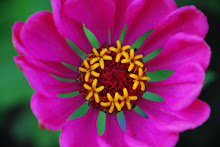Cover crops are sometimes known as "green manure." Cover crops are quick growing and planted primarily to keep the soil covered for a short period of time, often during the fall & winter. Then they are plowed under as "green manure" where they decompose and add organic matter to the soil. In addition to adding organic matter to the vegetable garden, cover crops suppress weeds by providing competition, reduce erosion, reduce nutrient loss from leaching and add nutrients.
Common cover crops are crimson clover, dutch white clover, vetch, annual rye grass, fall cereal rye, buckwheat, fava bean, oilseed radish, and austrian peas. There are also cover crop seed mixes that contain a variety of cover crops.
The lush green growth of cover crops returns large amounts of organic matter to the soil. Organic matter stabilizes moisture content and improves garden soil texture. When dug under the storehouse of nutrients in cover crops are returned to the soil.
Crimson clover, dutch white clover, fava beans, austrian peas and vetch are all members of the legume family. This means when they are used as a cover crop they actually return nitrogen to the soil. Legume plants are hosts to nitrogen-fixing bacteria and extract nitrogen from the air and convert it into a form that can be used by plants. Legumes are awesome!
Fall is a great time to plant cover crops. Unless you are growing winter crops, you are probably cleaning up and putting your vegetable garden to bed at this time of year. Instead of just letting your garden rest during the winter why not plant some cover crops? Depending on the variety of cover crop you choose, they are usually seeded September-November. Plant cover crop seeds by broadcasting. The seeds need to be covered by soil and kept evenly moist while germinating. Most cover crops need a full sun location. Check seeding rates with individual varieties.
This year we planted crimson clover in our 3 raised beds we put to rest for the winter. We planted crimson clover seeds on October 6th. It wasn't raining so we keep the soil moist with a daily light watering. The seeds germinated in under 1 week!
I like crimson clover because it has the nitrogen-fixing powers of a legume, it forms a dense green carpet during the winter and it is easy to turn under in the spring. An added bonus is it develops beautiful bright flowers in the spring that attract bees. Unlike dutch white clover, crimson clover is non-invasive.
I have planted many varieties of cover crops over the years. My 2nd favorite would be fava beans. Fava beans develop into tall 3 foot plus plants. They are vigorous growers with beautiful flowers. In addition to their legume nitrogen-fixing powers, favas have a very deep taproot that loosens up the hard clay soils in Portland. In the spring, hoe down the plants and leave the tap roots to decompose in the soil. Fava beans have sturdy stalks are more difficult to turn under than a soft carpet of crimson clover. But they are worth it, especially if you have a new garden with hard soil. Let the lava tap roots do the work for you!
Oilseed radish have the same taproot quality of fava beans, however, they are in the cabbage family so you need to consider them in your crop rotation schedule. For this reason I wouldn't recommend them in a small garden space. I have grown both annual rye grass and fall cereal rye. My experience is they germinate fast and tolerate a wide variety of harsh conditions. Their dense mat of roots make them excellent erosion controllers. However, it is this dense mat of roots that make them extremely hard to turn under by hand. I learned my lesson one year hoeing my community garden by hand. It was back breaking work to break up the rye grasses and I will never plant them again.
You can pick up cover crop seeds at your local nursery or garden center. Plant them this fall and reap the rewards come next spring!
Our crimson clover & garlic germinated very fast at the beginning of October!
Saturday, October 18, 2014
Subscribe to:
Post Comments (Atom)











No comments:
Post a Comment